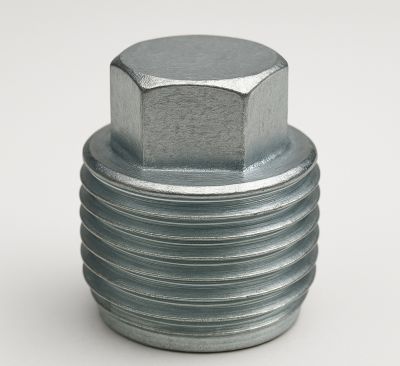Hydraulic systems are the lifeblood of countless machines and industries, from heavy construction equipment to agricultural machinery and manufacturing plants. These systems rely on fluid power to transmit energy efficiently, but that efficiency is only as good as the system’s ability to remain sealed. A single leak can compromise pressure, cause equipment failure, and lead to costly downtime.
That’s where Hydraulic Boss Plugs come in, simple yet indispensable components that ensure your system stays leak-free, reliable, and safe under high-pressure conditions.
What Is a Hydraulic Boss Plug?
A Hydraulic Boss Plug is a precision-engineered fitting designed to seal unused ports or connection points in a hydraulic circuit. These plugs effectively close off openings in hydraulic blocks, valves, or manifolds, preventing fluid leakage and contamination.
Commonly manufactured from carbon steel, stainless steel, or brass, boss plugs offer robust sealing performance even in the most demanding environments. By maintaining a tight, secure seal, they enhance both system efficiency and operational safety, ensuring hydraulic pressure remains consistent and contamination is kept at bay.
Why Proper Sealing Matters in Hydraulic Systems
Leaks in hydraulic systems can have severe consequences. Even a minor leak can result in:
➡️ Reduced system efficiency due to pressure loss.
➡️ Safety hazards, such as slippery surfaces and the risk of fire from escaping oil.
➡️ Increased maintenance costs caused by frequent fluid top-ups and component replacements.
Maintaining optimal hydraulic pressure is essential for smooth, consistent performance. A properly installed boss plug prevents both external contaminants (like dust or moisture) from entering the system and valuable hydraulic fluid from escaping — protecting the system’s performance and longevity.
Key Features and Benefits of Hydraulic Boss Plugs
1. Leak Prevention: Designed for tight, secure sealing in high-pressure hydraulic environments.
2. Durability: Built to resist corrosion, vibration, and extreme temperature changes.
3. Easy Installation: Compatible with standard hydraulic fittings for quick, hassle-free setup.
4. Cost Efficiency: Minimizes downtime, fluid loss, and maintenance expenses.
5. Versatility: Ideal for use in a wide range of industries, including construction, manufacturing, agriculture, and marine applications.
Types of Hydraulic Boss Plugs
Hydraulic boss plugs come in various designs to suit different system requirements:
➡️ Thread Types: Available in BSP, NPT, and SAE thread configurations to match diverse international standards.
➡️ Sealing Styles: Options include flat-face plugs and O-ring boss plugs, depending on pressure rating and sealing preference.
➡️ Material Variations: Choose from carbon steel for heavy-duty applications, stainless steel for corrosion resistance, or brass for lighter-duty systems.
Selecting the right plug type depends on factors like operating pressure, environmental conditions, and compatibility with your hydraulic components.
How to Install a Hydraulic Boss Plug Correctly
Installing a hydraulic boss plug may seem straightforward, but attention to detail ensures long-lasting performance.
Step-by-step guide:
1. Preparation: Depressurize the hydraulic system and clean the area around the port.
2. Cleaning: Ensure both the plug and port threads are free of dirt and debris.
3. Alignment: Carefully align the plug with the port to prevent cross-threading.
4. Tightening: Use the appropriate torque level — avoid over-tightening to prevent thread damage.
Safety Tips:
➡️ Always wear protective gloves and eyewear.
➡️ Use manufacturer-specified torque values.
➡️ Never install plugs in a pressurized system.
Common Mistakes to Avoid:
➡️ Over-torquing the plug.
➡️ Using mismatched thread types.
➡️ Neglecting to replace worn O-rings or seals.
Applications Across Industries
Hydraulic boss plugs are essential in a wide range of industrial and commercial sectors, including:
1. Heavy Machinery & Construction Equipment: Excavators, loaders, and cranes.
2. Oil & Gas and Petrochemical Plants: Sealing unused lines during maintenance or testing.
3. Agriculture: Tractors and hydraulic-driven implements.
4. Marine & Automotive Systems: Hydraulic steering, braking, and control systems.
Wherever hydraulic power is used, boss plugs play a critical role in maintaining safety and system integrity.
Maintenance and Inspection Tips
To keep your system performing at its best:
➡️ Regularly inspect plugs for signs of wear, corrosion, or leaks.
➡️ Replace O-rings or seals immediately if they show damage or hardening.
➡️ Keep spare plugs in your maintenance kit for quick replacements during emergencies.
Routine checks and timely replacements help extend system life and prevent unexpected failures.
Choosing the Right Supplier
The quality of your hydraulic components determines the reliability of your entire system. When selecting a supplier for hydraulic boss plugs, consider:
1. Reputation for Quality: Look for precision-engineered components that meet industry standards.
2. Certifications: Ensure the supplier is compliant with ISO or equivalent quality certifications.
3. Material and Machining Precision: Accurate threading and consistent surface finish are critical for a secure seal.
Partnering with a trusted supplier ensures you get consistent performance, long-term reliability, and peace of mind.
Conclusion
A well-sealed hydraulic system is a safe, efficient, and cost-effective one. Hydraulic Boss Plugs may be small in size, but their impact on system performance is enormous, preventing leaks, maintaining pressure, and protecting against contamination.
When you choose quality, you protect your investment. Upgrade your hydraulic systems today with precision-engineered boss plugs and ensure every connection is sealed for success.
Post time: Oct-22-2025


